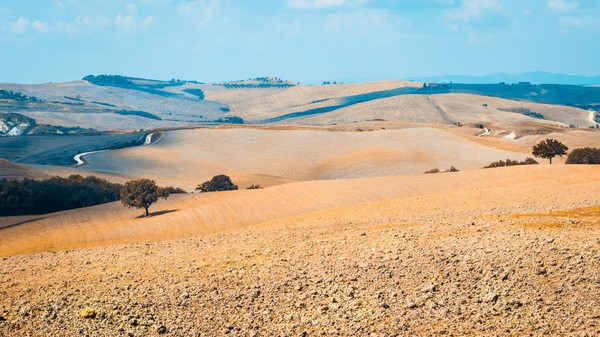
Drought: global warming towards new records
The increase in global average temperatures has been ongoing since 1976, with increasing anomalies.The trend also affects Italy, which is located in a particularly fragile region, the Mediterranean, from a climatic point of view. In the Peninsula, the increase in temperatures is accompanied by a rainfall deficit
In 1976, the national football team of a state that no longer exists, Czechoslovakia, won the European football championships, while another dissolved country, the USSR, won the Olympic medal in Montreal. Meanwhile in Cupertino, California, a company was born that would revolutionize information technology and telecommunications, while in Italy Tina Anselmi was the first woman to become a minister. But 1976 grabs the headlines also because it was the last year to record a drop in the global average temperature. Since then - as evidenced by the time series of the National Oceanic and Atmospheric Administration (NOAA), the US government agency that monitors climate phenomena - there has been an uninterrupted rise in temperatures, in increasingly large steps. Global warming became even more evident in the late 1990s, when the average increase in temperatures steadily settled on values close to one degree. Then, in the 2000s, global warming recorded a surge; 2016 was the hottest year ever (lands +1.55° compared to twentieth century average), followed closely by the torrid 2019 (+1.43°). While the scientific community is divided on the causes of climate change - most scientists support the anthropic origin of the warming, while a minority disputes it - the fact itself, i.e. the sudden and generalized increase in temperatures, is now a given. The NOAA time series indicate a clear trend line. From 1880 until 1937, we see a slight negative anomaly, year on year, of around half a degree. Between the end of the 1930s and the mid-1970s, positive and negative anomalies alternated, never exceeding 0.5°C. After that, starting from 1976, the average temperatures turned consistently positive. Since 1998, the deviation has been around one degree, one degree and a half. Italy is no exception. Even in the Italian scenario, the trend in average temperatures, year on year, from 1800 until today, shows significant anomalies starting from 1980, with a sharp surge that began in the second half of the 90s and continues to this day. For Italy - reports the Institute of Climate and Atmosphere Sciences (ISAC) of the CNR - 2019 was the fourth hottest year ever (+0.96 degrees from the 1981-2010 average), but the record is 2018, with a +1.17°. The first four months of 2020 continue in this direction. Driven by an exceptionally mild winter, the anomaly rose to +1.4° between January and April. If we continue at this rate, 2020 could soon exceed the 2018. In short, in our Peninsula, the effects of global warming are particularly evident, also because Italy is in a region with a high climate risk. “The Mediterranean area, due to combined natural and anthropic effects, is highly vulnerable, and climate change will have significant consequences”, explained Giorgio Budillon, professor of Oceanography and Atmospheric Physics at the Parthenope in Naples, commenting on the launch of a report edited by the Institute of Mediterranean Studies of the CNR. “The alternation of greater precipitation and long periods of drought - added Budillon - the hydro-geological risk, and the scarcity of water will increase, with significant negative consequences on the agricultural sector”. Drought is the other side of the coin of global warming. In this case, the ISAC-CNR times series describe a progressive decrease in the average annual rainfall, with negative peaks that tend to concentrate in the winter months since the 90s. In short, it rains less, and this happens especially in winter. The 2020 winter season, for example, ended on the whole national territory with a water deficit of 50% compared to the 1981-2010 average. Moreover, in our Peninsula, the drought trend has been going on for several years. In this regard, taking the 1961-1990 rainfall average as reference, the Higher Institute for Research and Environmental Protection (ISPRA) reports that the last 35 years have seen a clear prevalence of negative anomalies over the positive ones (24 events against 10, only one event within the average). In some cases, these anomalies saw deficits of over 20%. Although significant, the cumulative rainfall figure has a big limitation, because it does not provide any information regarding rainfall distribution. The concentration of rainfall on certain areas of the country and at certain times of the year, when followed by shorter or longer breaks, contributes to determining drought conditions for those areas, even if the cumulative data might be in line with the averages. “Precipitation [...] shows fluctuations in the amount of annual rainfall that falls to the ground, which is the most worrying aspect of this phenomenon. Quoting a report by ISTAT dated 2010, it means having to manage years of heavy rainfall and years of severe water shortages, with a resulting increase in the risk of landslides and floods in the first case and water scarcity and drought in the second”. Agriculture and mechanization therefore face a dual challenge. On the one hand, adapting cultivation practices to global warming, and on the other hand, optimizing the use of every single drop of water, because “blue gold” could soon become a rare resource.








